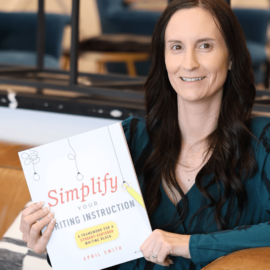Truth be told, I’m not much of a bulletin board person. I don’t find any joy whatsoever in putting them up, and I’d honestly keep the same boards up for 10 years if I could! My first few years teaching, I resisted the fabric bulletin board movement for because I really didn’t want to spend any money on my boards. Why do that when the school had free butcher paper? I found that I was switching the paper out 3-4 times a year because the harsh lights fade the butcher paper and it gets torn easily. You can’t just swap out papers on a butcher paper background.
I also noticed that the people around me with fabric boards were never swapping theirs out. Sometimes it’s worth a little money for convenience! I paid $16 for my extra large bulletin board and a smaller one – and this lasted me THREE years! I actually left it up when I left my classroom because it was in perfect condition, so it could have gone longer.

Which fabric works best?
The cheap $4.99 fabric does not work as well. It’s stiff, and you can see through it when you hold it up to the light. It will work, but it’s not as pretty. It also tends to come in a small width, so it won’t cover your entire board. Look for something thick and stretchy, like jersey or knit. This is usually on sale, which allows you to get it for just a few dollars more than the cheap fabric. You can sometimes also find jersey sheets on clearance for a great price. There are some trade-offs with the jersey fabric, but it looks beautiful when it’s up!

Another option is cotton fabric, the kind you see at around $10.99 (regular price) for a yard. It’s a step above the discount fabric, and is thicker. It also has just a slight stretch to it. It doesn’t feel as much like cheap burlap as the discount fabric does. It’s usually not as wide as the jersey fabric I found, so you’ll need to use two rows, which means more waste. It is easier to work with – and easier to find.
If you’re on a very tight budget, use whatever you can find in the clearance section. Fabric is fabric. If you hold it up, you’ll be able to make a good judgement on if it will work on your board.
How much fabric do I need?
- My Small Bulletin Board (about 30” long): 1 yard
- My Large Bulletin Board: 3 yards
If I had used regular-width fabric, I would have needed twice as much.
Always measure the length and width of your bulletin board before you go to the fabric store.
1. Staple the fabric to the top of the bulletin board, leaving 1/2″ space where the border will go.

2. Pull the fabric tight to prevent wrinkles. Staple the middle bottom.

3. Pull tight and staple the left and right sides, until all four sides are securely stapled.
4. Trim the sides by pulling tight and cutting close to the edge, beginning at the top and cutting downward.

5. Cut slowly to ensure you do not cut too much. You should have 1/2″ space around your border. Check your border to make sure it hides the edge of the fabric.

6. Staple on your beautiful border!


